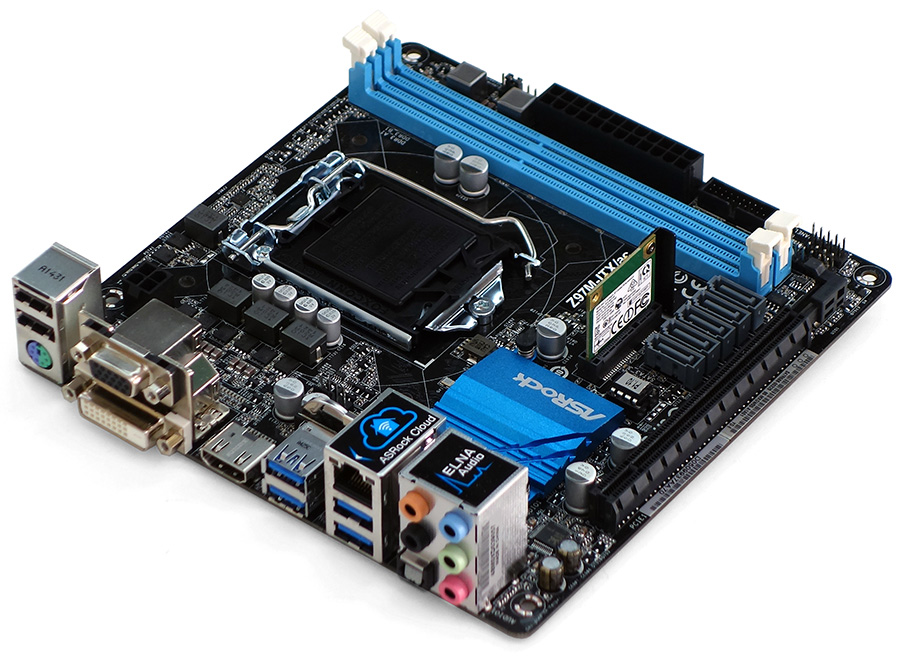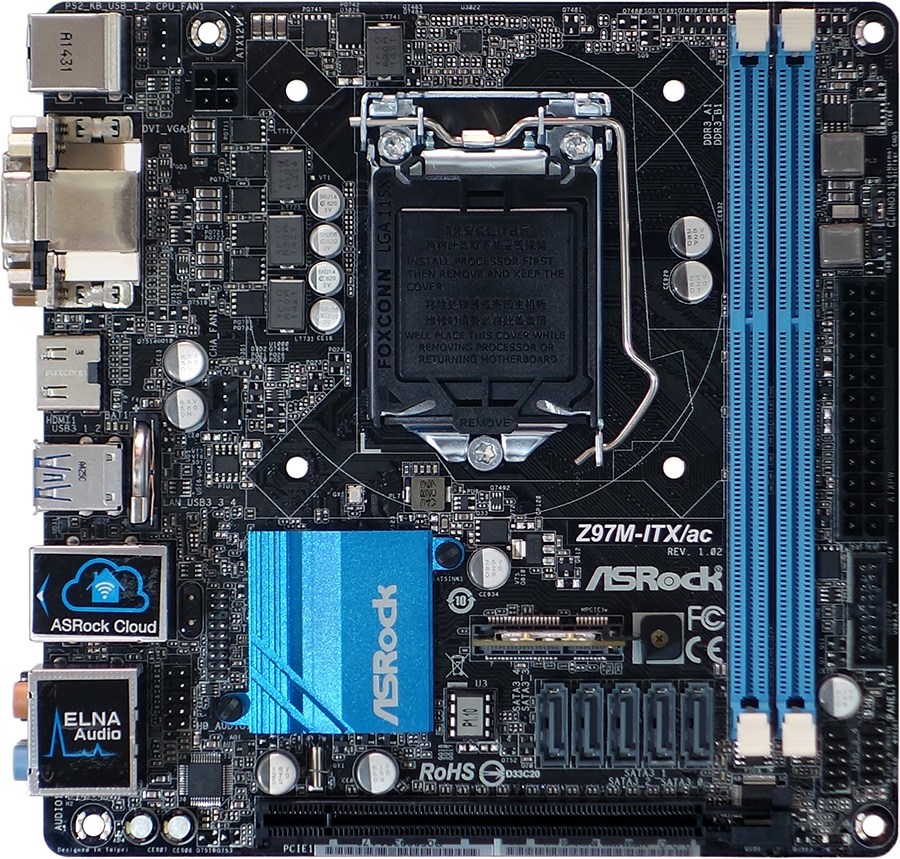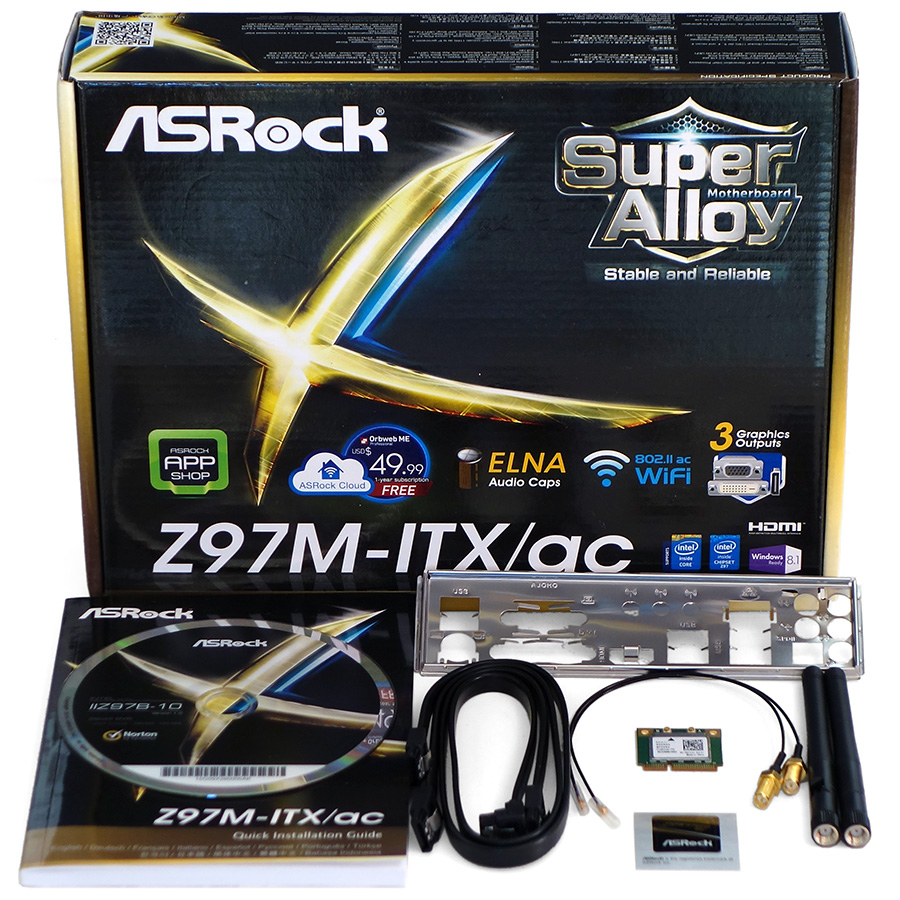ASRock Z97M-ITX/ac Versus MSI Z97I AC
Why you can trust Tom's Hardware
ASRock Z97M-ITX/ac
Lacking so much as a heat sink for it four-phase voltage regulator, ASRock hopes to compete against expensive rivals with features like on-board 802.11/ac Wi-Fi, five SATA 6Gb/s ports, an upgraded gigabit Ethernet controller and a low price. These things could all make it useful for building a plethora of content-oriented configurations, including a living room HTPC or home media server.
The Z97M-ITX/ac’s I/O panel appears surprisingly sparse, given the integrated features of Intel’s Z97 PCH. But that’s partly because ASRock leaves room for the Wi-Fi antenna connectors on its I/O shield. Missing is DisplayPort connectivity, for example, and the HDMI output is limited in the resolutions it'll support. In media centers, that means you’ll probably pair this inexpensive motherboard with an inexpensive display or resort to adding a graphics card that you probably thought you’d only need for games.
ASRock saves surface space by using a vertical mini-PCIe slot for its dual-band single-channel wireless controller, and includes a vertical bracket for attaching the card. Shown installed, these parts ship in the motherboard’s installation kit.
The USB 3.0 front-panel header is kept out of harm’s way next to the main ATX power connector, and the five SATA ports are lined up above the board’s PCIe 3.0 x16 slot. ASRock slides the LGA 1150 interface away from the x16 slot to optimize CPU cooler clearance, though this results in large coolers hanging past the top edge.
My only layout complaint isn’t exactly about layout. The Z97M-ITX/ac has only two fan headers including the one for the CPU fan. All of my cases have at least two fans, and half of my small CPU coolers also have two fans. Using fan splitters usually means making a mess of the cable pathways.
The Z97M-ITX/ac includes only two SATA cables in spite of the board’s five cable headers. Also shown are the Wi-Fi card and accessories, prior to card installation.

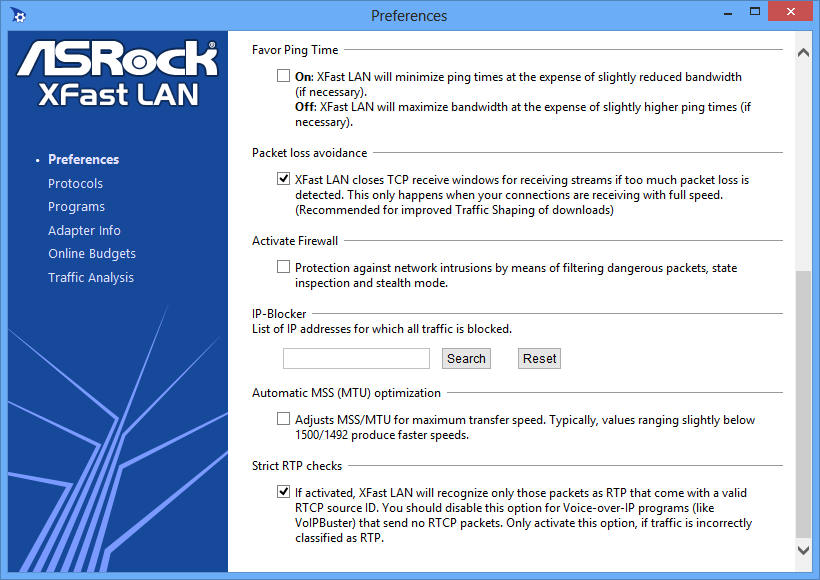
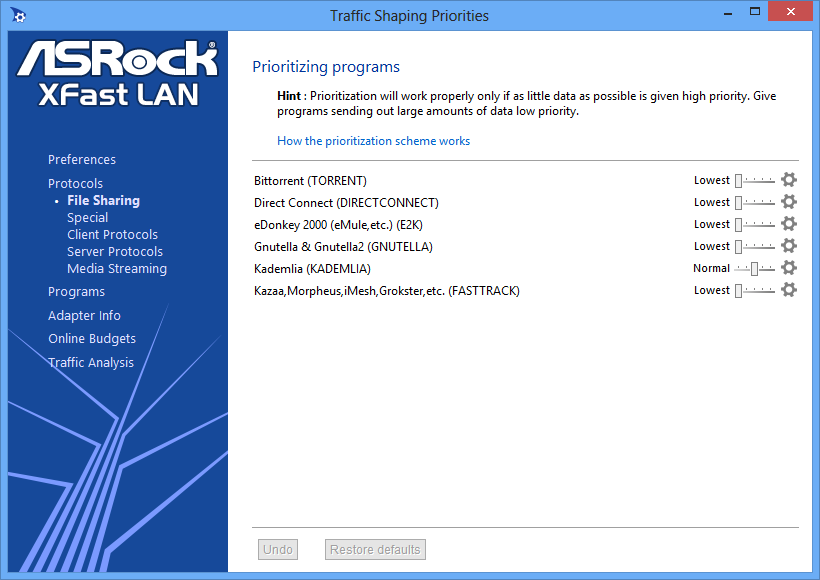
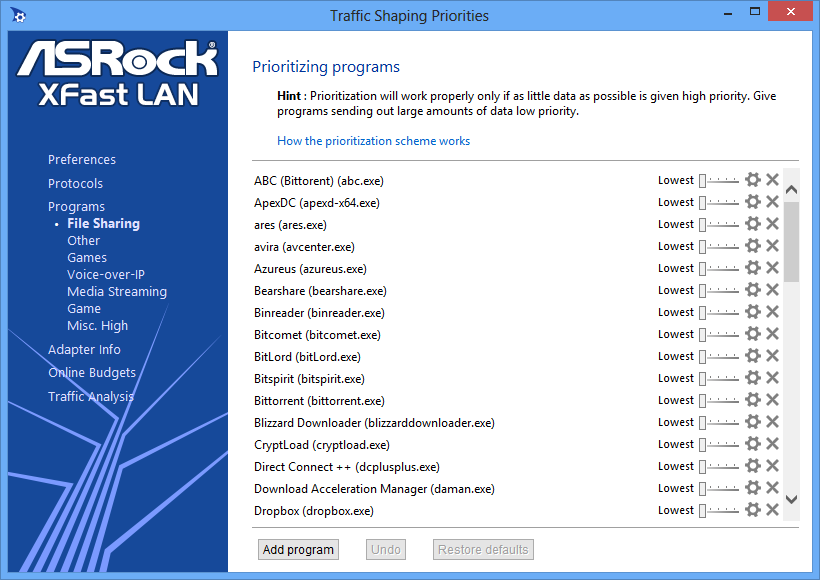

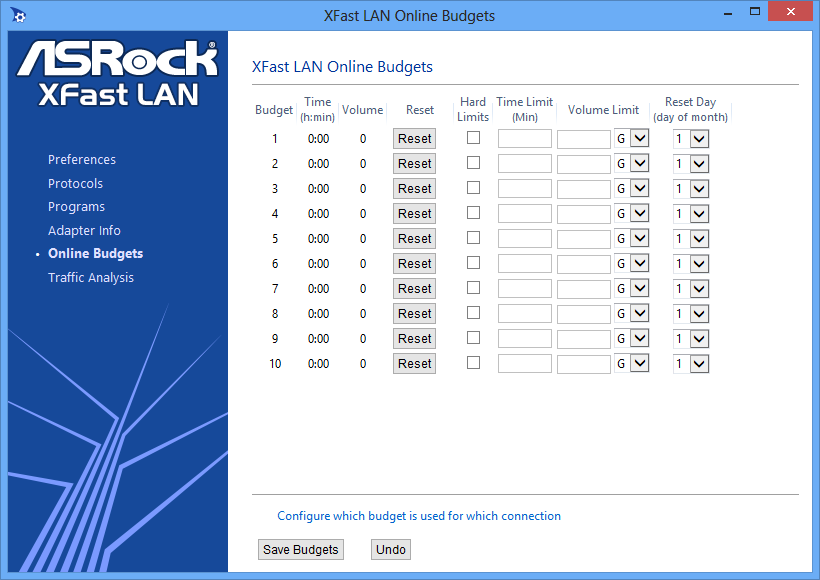
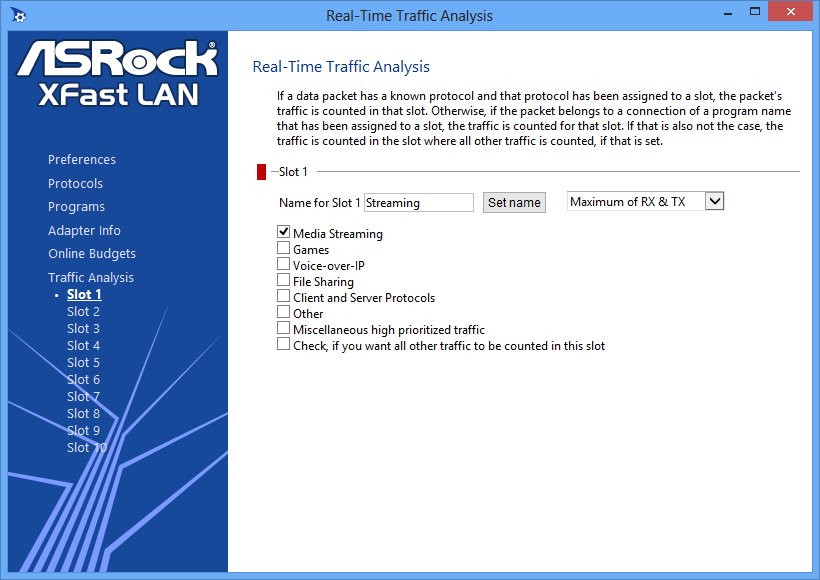
ASRock XFast LAN “Traffic Shaping” software (by cFOS) helps network gurus and gamers set packet priority and bandwidth restrictions.
Get Tom's Hardware's best news and in-depth reviews, straight to your inbox.
Current page: ASRock Z97M-ITX/ac
Prev Page Introduction Next Page Z97M-ITX/ac Overclocking Software And Firmware-
i7Baby 4K on integrated graphics?Reply
I think I'd prefer to use a very heavy graphics card.
Would it be a better deal to get a mitx mobo and add a pcie wifi card yourself? -
Luay Well, the reason WI-FI on mitx doesn't matter is because a simple USB WI-FI dongle will do the trick. Arguably, sound chips don't matter either becasue a USB headsets, or even better, HDMI from the video card through an AV receiver will also free up a motherboard's budget for the more important features we want.Reply
What's unforgivable in those two models is the lack of an M.2 slot. -
i7Baby Dongles don't work as well as pcie wifi cards mainly because dongles don't have good antennae.Reply
I don't think M.2 is worth it yet. The SSDs aren't any faster than sata SSDs - so far any way. -
Crashman Reply
Don't worry about 4k, think about QHD (2560x1440), particularly in work environments such as displaying large spreadsheets. People say the previous-generation HDMI and single-link DVI is limited to 1080p, but I think that's because they forget about the 1920x1200 option.15721416 said:4K on integrated graphics?
I think I'd prefer to use a very heavy graphics card.
Would it be a better deal to get a mitx mobo and add a pcie wifi card yourself?
The problem is that the ASRock board doesn't allow ANY resolution above 1920x1200, including the ever-present QHD.
The solution is that the MSI board allows EVERY resolution up to 4k, including the ever-present QHD.
I hope when I phrase it like that, you'll understand why 4k isn't the issue: It's the "up to 4k" part--those in-between settings like 2560x1440--that matter enough in typical integrated graphics markets to make this an important feature. -
dvanburen This Asrock board doesn't make a sensible purchase. Asrock offers a much nicer version (Z97E-ITX/ac) with a 6-phase power controller, Display Port, Intel LAN, VRM Heatsink, better audio and more. It's usually about $117 AR in the US, only a $15 premium over the reviewed Z97M-ITX/ac.Reply
Asrock also offers the H97M-ITX/ac, which is virtually identical to the reviewed Z97M-ITX/ac other than the chipset. Seriously, it's the same PCB. It's also $19 less expensive. I doubt that anyone is going to buy the Z97M-ITX/ac to overclock, so what's the point of choosing Z97 over H97? Oh, the H97M-ITX/ac can overclock too. So again, why does the Z97M-ITX/ac even exist?
TL,DR: Save your money and get the H97M-ITX/ac if you want a decent HTPC/NAS/Whatever. Buy the Z97E-ITX/ac if you want more features and better OC potential. Skip the Z97M-ITX/ac. -
logainofhades I wonder why Asrock sent there inferior board? Maybe someone at Asrock goofed. The Z97E-ITX/ac is definitely a far better board and includes an M.2 slot. Also the other companies that declined to offer a review sample, makes me feel they didn't see their product as good enough to compete. I shall avoid their ITX boards, in the future.Reply -
Onus Perhaps other mITX offerings will make an appearance soon...Reply
(If you don't care about overclocking, the H97M-ITXa/c is indeed a nice board)
Reviews are sometimes centered around a particular price point, which may be why the more premium products aren't shown here.
I just built Minion using a Maximus VII Impact. The only thing I wish it had, and this is minor, is a second USB2.0 header so I can use an existing card reader with it. I'll just buy an external USB3.0 card reader instead. -
logainofhades Their price is similar enough, that I don't see the point of the Z97 board we were given, vs the one we really wanted to see.Reply
PCPartPicker part list / Price breakdown by merchant
Motherboard: MSI Z97I AC Mini ITX LGA1150 Motherboard ($122.99 @ SuperBiiz)
Total: $122.99
Prices include shipping, taxes, and discounts when availableGenerated by PCPartPicker 2015-04-21 16:27 EDT-0400
PCPartPicker part list / Price breakdown by merchant
Motherboard: ASRock Z97E-ITX/ac Mini ITX LGA1150 Motherboard ($129.99 @ SuperBiiz)
Total: $129.99
Prices include shipping, taxes, and discounts when availableGenerated by PCPartPicker 2015-04-21 16:27 EDT-0400
PCPartPicker part list / Price breakdown by merchant
Motherboard: ASRock Z97M-ITX/AC Mini ITX LGA1150 Motherboard ($117.99 @ SuperBiiz)
Total: $117.99
Prices include shipping, taxes, and discounts when availableGenerated by PCPartPicker 2015-04-21 16:28 EDT-0400
